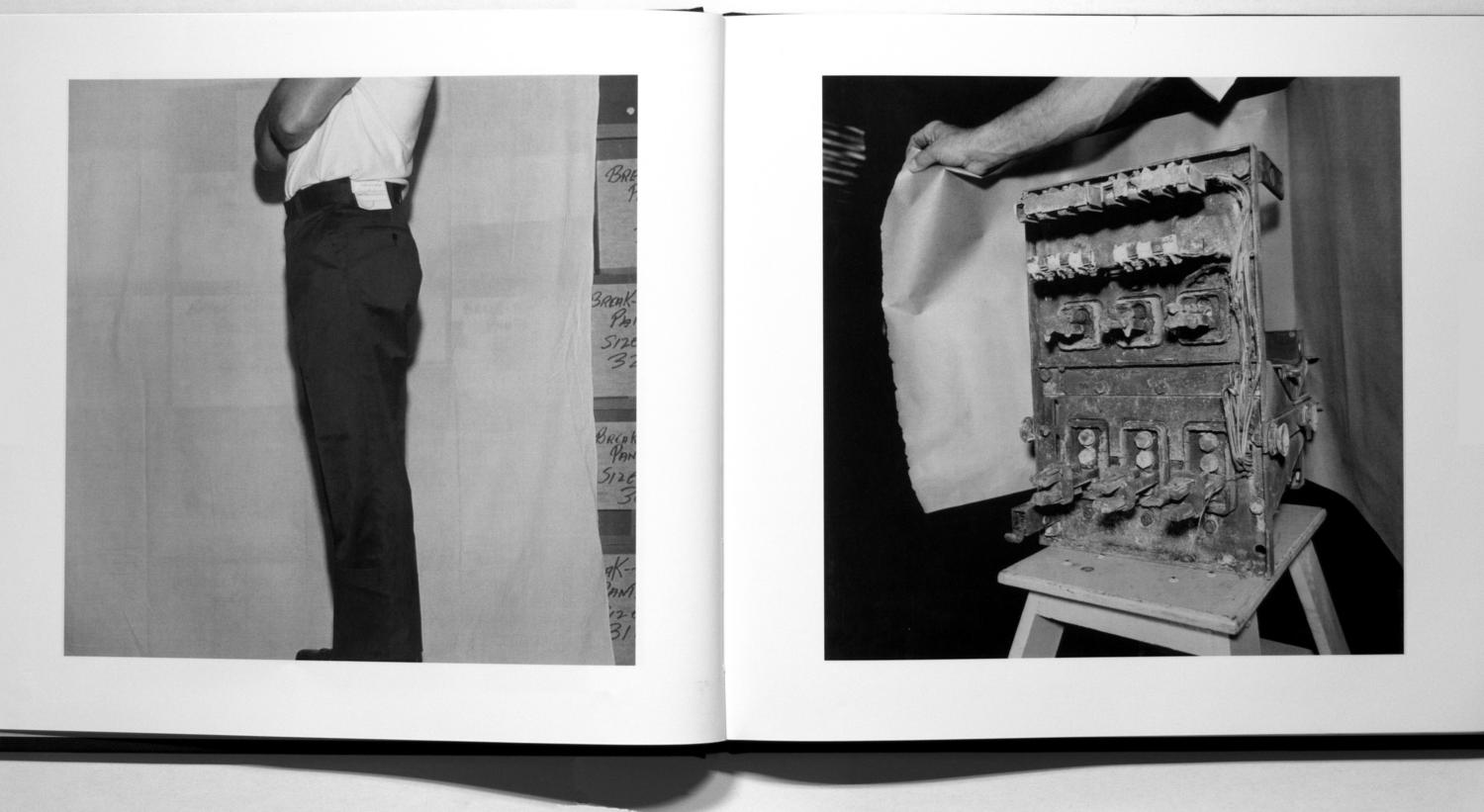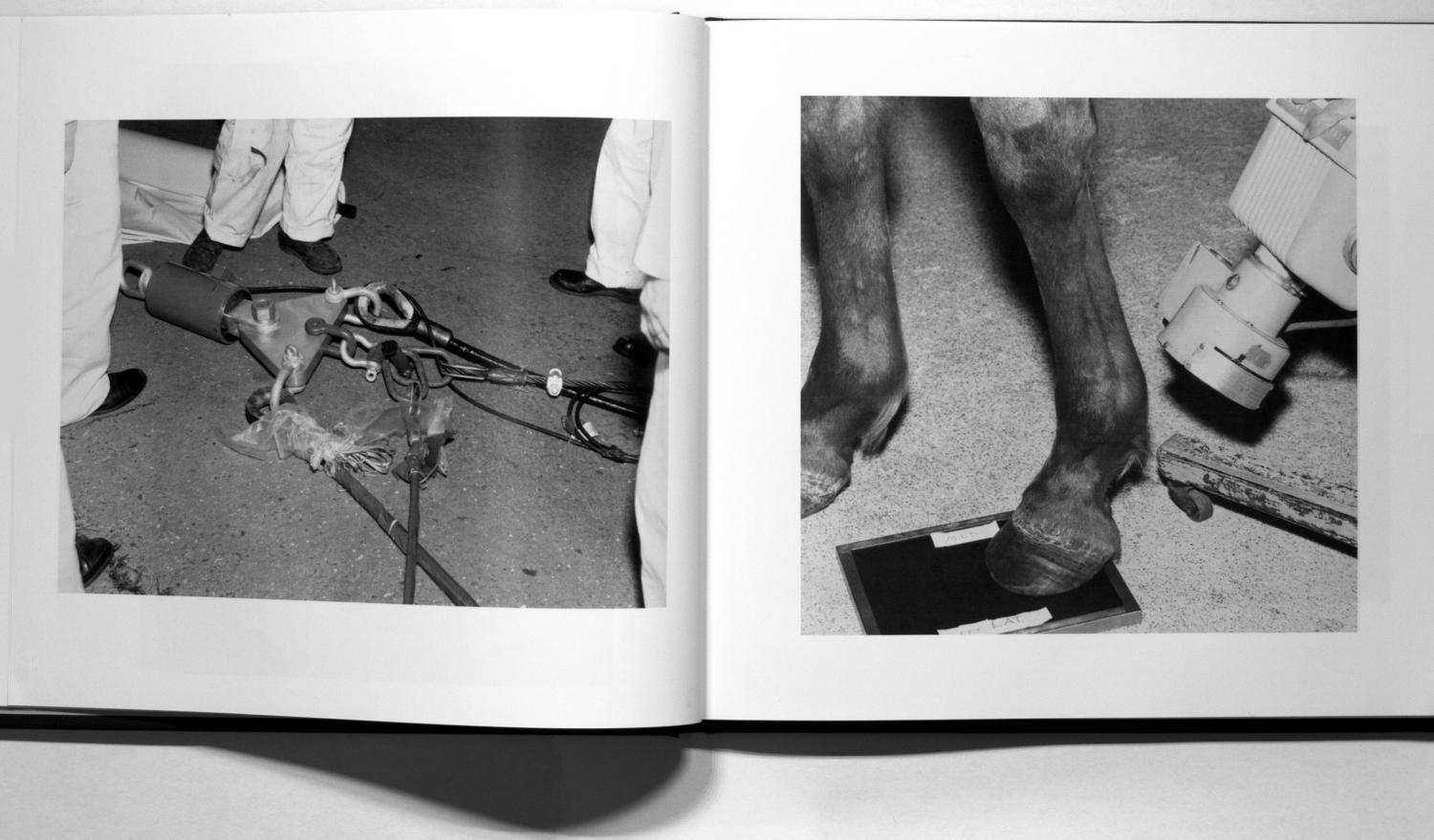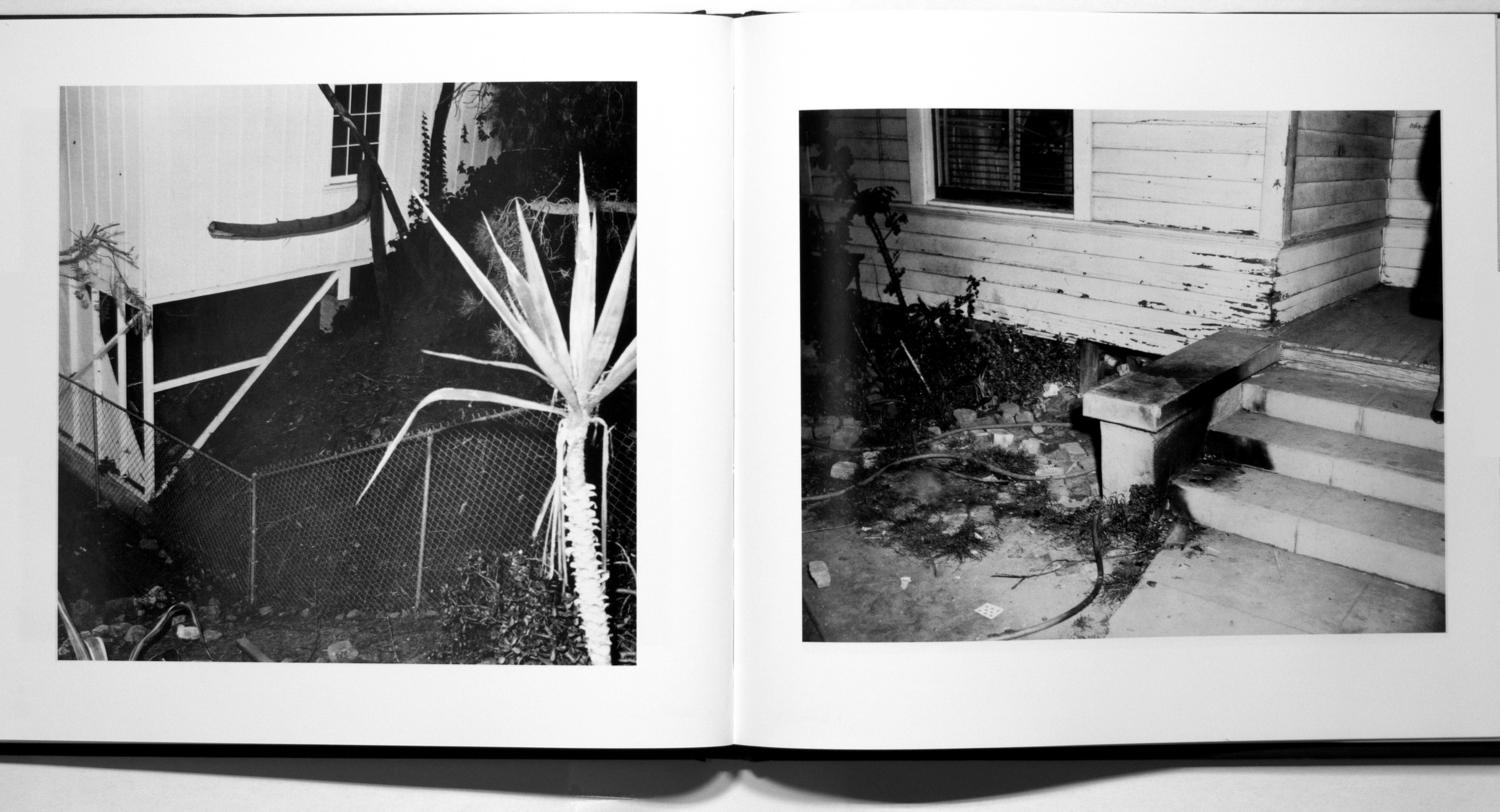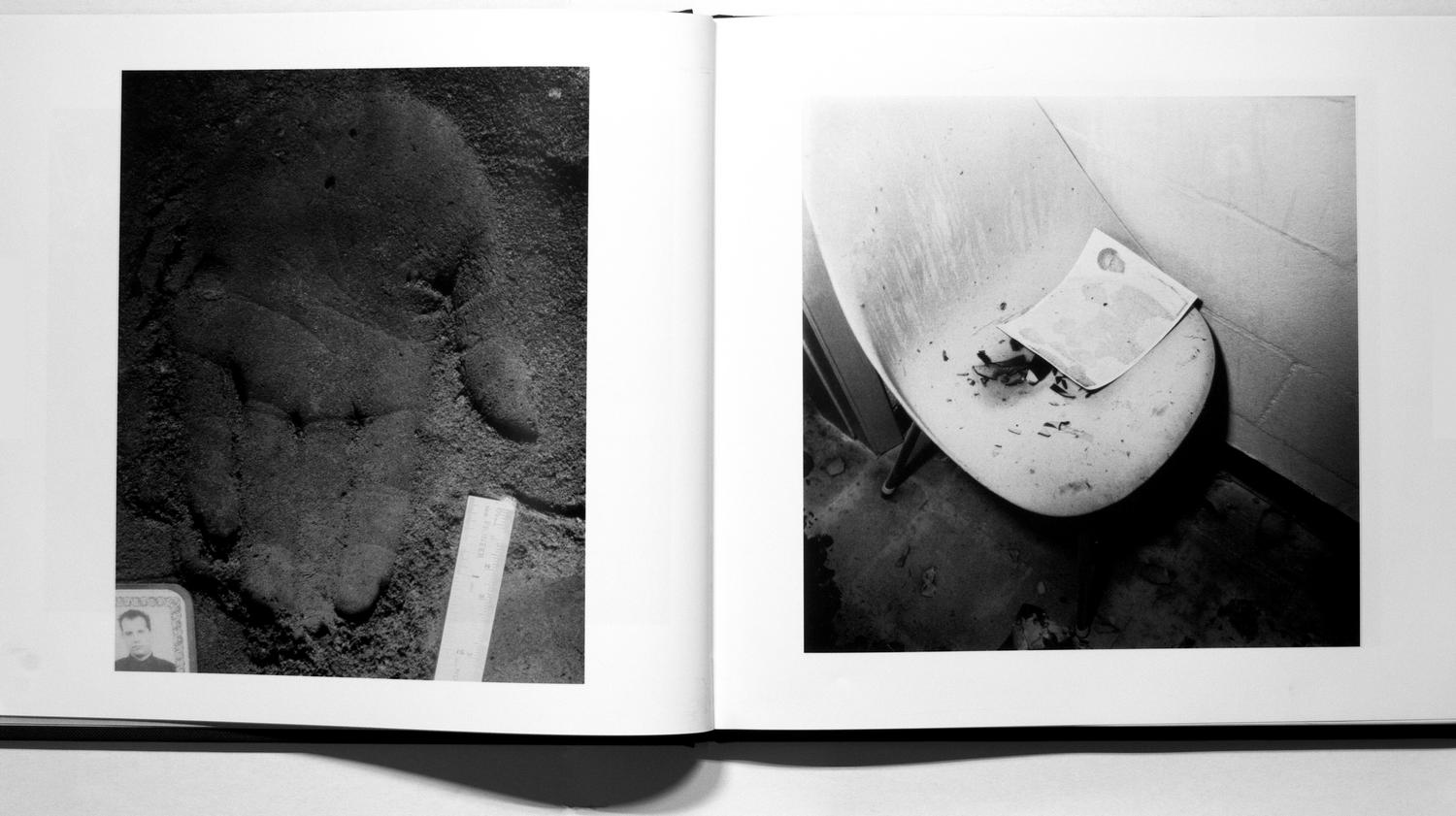Between 1975 and 1977, Mike Mandel and Larry Sultan viewed a large amount of photographic material in over 100 image archives of US American government agencies, research laboratories, and corporate offices. As a result, they made a selection of 243 photographs, 59 of which were presented in a photo book entitled Evidence, published in 1977 (see Fig. 1).1 In the same year, 89 of their selected photographs were on display for the first time in the San Francisco Museum of Modern Art.
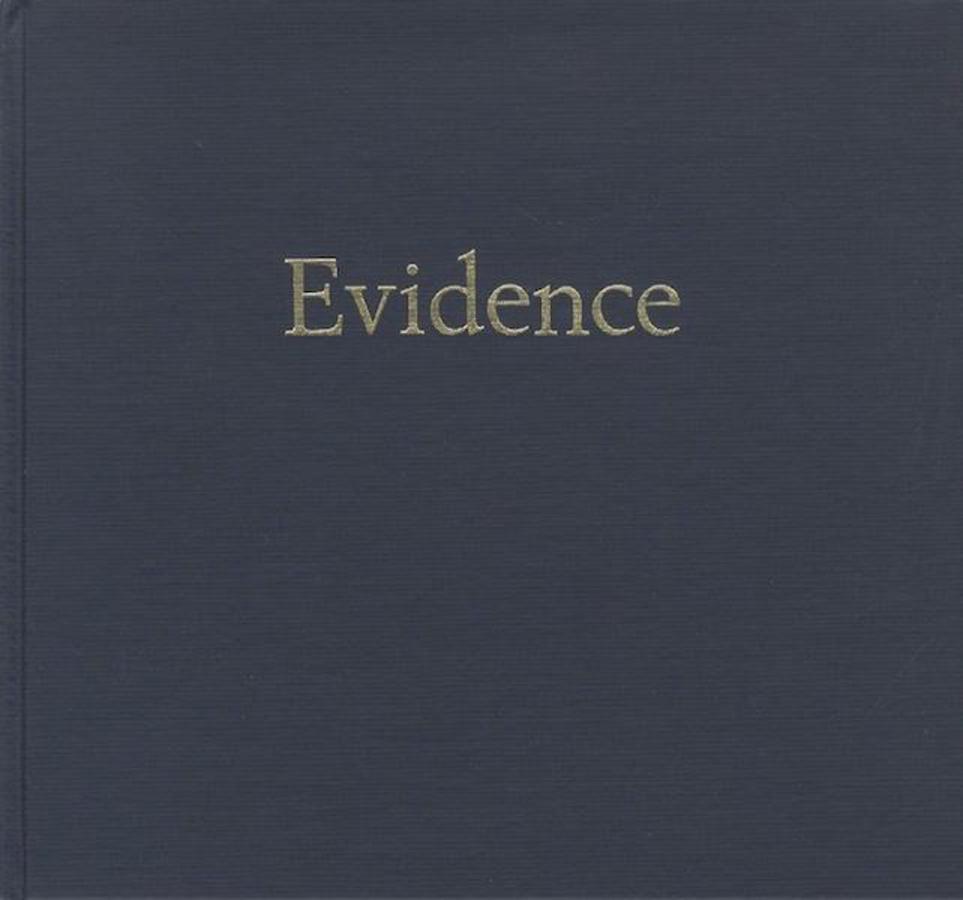
Fig. 1: Cover of Evidence, a photo book by Mike Mandel and Larry Sultan.
Now, 40 years after its first publication, I would like to shed new light on the Evidence project by discussing its visual representations with regard to the archive.2 By doing so, I aim to challenge the predominant interpretation of Evidence by rereading the photo book against the backdrop of archival practices. In arranging and presenting the images, I argue, Evidence turns away from conventional procedures associated with the archive, and thus encourages us to focus on the imagery of the photographs and rethink the archive. At the same time, however, archival practices became effective when the Evidence photographs were on display in the gallery space. I would like to examine to what extent a curatorial gesture and archival modes affect and transform the artistic work.
I also plan to state the potential of an elaborate analysis for extensive research on the Evidence project by focusing on how the photographs are dealt with within photographic collections. After being selected by Mandel and Sultan, the photographs became part of other photo archives or collections. Assuming that the way the photographs are dealt with within the collections (registration, classification, categorization, presentation, and storage) has a strong impact on their reception and the presentation of the photographs as aesthetic objects, I would like to outline the practices of two institutions whose collections became home for the Evidence photographs.3
Finally, I will conclude my paper with a critical comment on the practice of registering photographs within photo collections and on exhibiting them within art contexts. Taking into account my previous observations, I am prompted to question the adequacy of the relevant practice of cataloging with regard to the shifting contexts the Evidence photographs are set in. The question arises how an archive can be true to and represent the different contexts of photographs.
13.1 Evidence—a brief introduction
Containing a corpus of 59 images with no captions, the Evidence photo book presents page after page of black-and-white photographs from various archives in both landscape and portrait format.4 The photo book comprises a list of all the archives visited in alphabetical order. It is only this list preceding the pages of photographs that provides information on the origin of these photographs in different settings, showing, for instance, experimental arrangements in laboratories, crime scenes, and outside explosions (see Figs. 2–4).
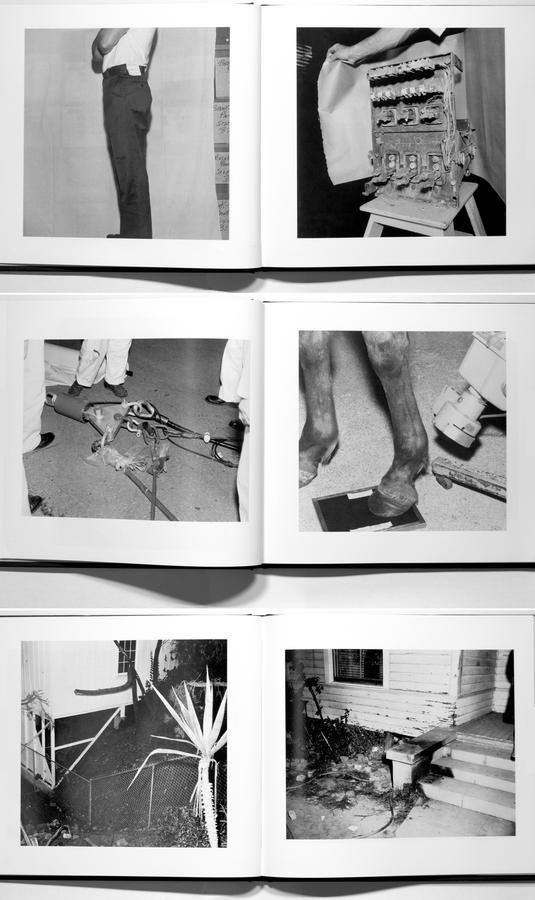
Fig. hicollage13_1
A few weeks after Mandel and Sultan had self-published the photo book in spring 1977, a small show opened in the San Francisco Museum of Modern Art presenting the photographs in the book and several more besides.5 From then on, the photographs themselves which had served as material for the photo book were exhibited in the gallery space. In the course of their further presentation, several exhibition displays evolved that vary in terms of presentation and arrangement as well as the number of photographs exhibited. These photographs, simply placed behind glass, are set in grids, arranged according to the layout of the photo book or presented as individual photographs framed with passe-partout (see Figs. 5, 6).
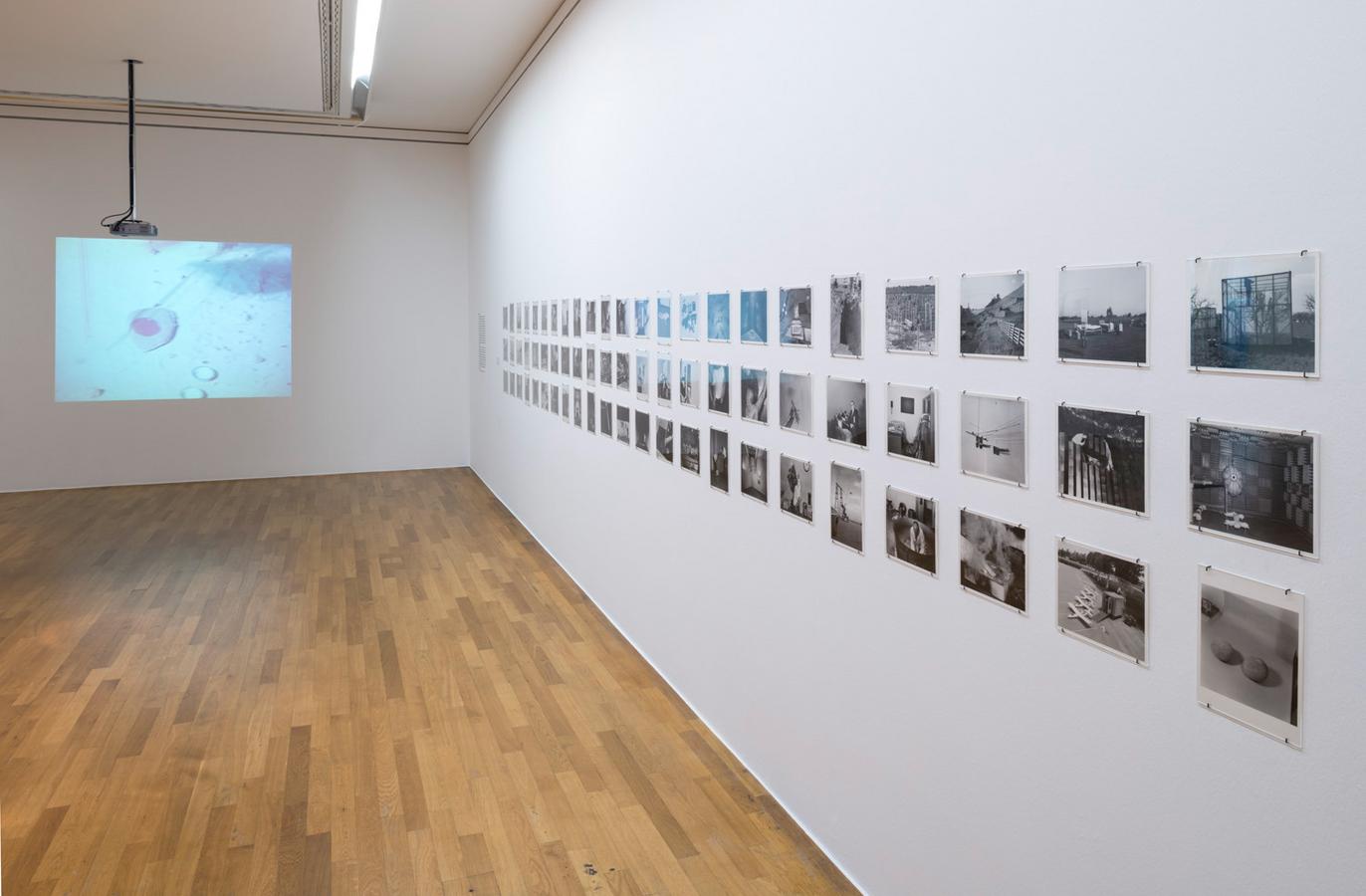
Fig. 5: Installation shot showing the exhibition display at Kunstmuseum Bonn, Larry Sultan retrospective, 2015.
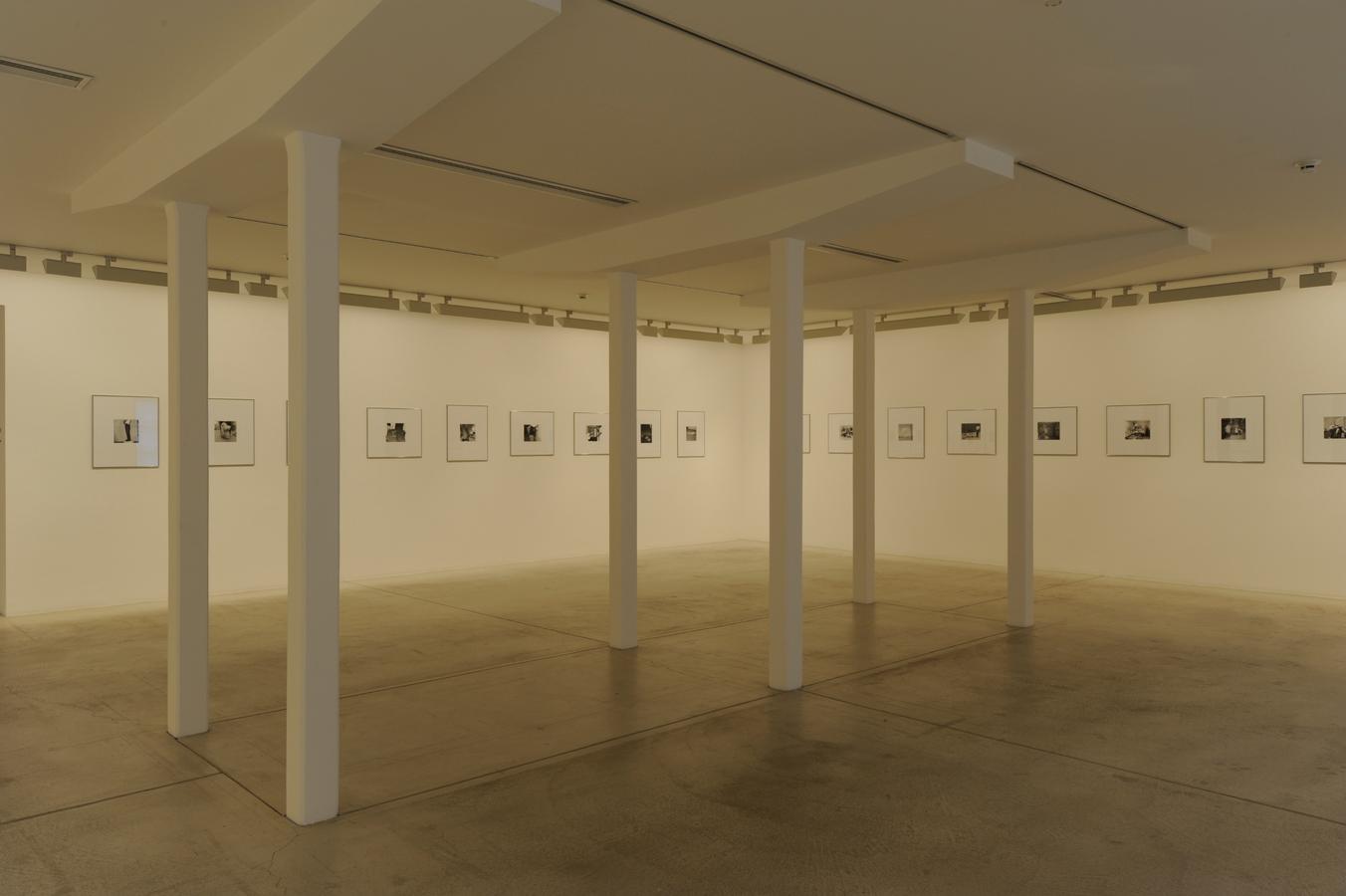
Fig. 6: Installation shot showing the exhibition display of the Evidence photographs at Fotomuseum Winterthur, 2010.
13.2 Reflections on the archive
Several archives serving as a rich source of images are at the root of the artistic work. The archive as a model of order and presentation, as a place where knowledge and meaning are produced, is an elementary point of reference for the artistic treatment of the photographic material discovered. I would like to examine to what extent Evidence questions the concept of archives by presenting and arranging the photographs in ways that are opposed to conventional archival practices. By introducing a reading of Evidence as a reflection on the archive, I would like to add a new perspective to the existing readings.
Focusing on the practice of appropriating imagery found and introducing it into art contexts, Evidence has been mainly aligned with the tradition of the readymade. Specifically, the artwork has been read as an artistic approach to the significance of context for the meaning of a photograph. In its radical omission of any sort of explanatory context (such as captions or authors), Evidence states how the meaning of the photograph depends on its contextual embedding.6 Most of the settings depicted are difficult to identify. Consequently, the photographs can no longer be used as testimonies of a documentary practice; the promise of an evidential character in the title is not kept. The photograph’s function, intention, and meaning are no longer recognizable, as Peter Geimer remarks. The meaning of the photograph is restricted to its indexical nature. Following Rosalind Krauss, Peter Geimer argues that the photographs lost their code while being decontextualized and are thus shown in their meaningless meaning (Geimer 2015, 199–201). In “Notes on the Index: Part I,” Rosalind Krauss notes: “A meaninglessness surrounds it [the photograph] which can only be filled in by the addition of text” (Krauss 1977, 77). Several studies on context and photography demonstrate that writing has a significant effect on the meaning of a photograph, as do captions, for example.7 An equivalent meaning is assigned to writing within the photo archive, where inscription practices are performed to such a high degree, Tiziana Serena argues, that there can be no photo archive without inscriptions. As Serena points out, in the archive, a range of different inscription practices (description, categorization, etc.) become effective and thus transform the photograph into a document. Furthermore, writing establishes the archival order “structuring its physicality, affect[ing] its functioning and communication” (Serena 2011, 68). Hence, during the process of appropriation, the Evidence photographs are separated from their original settings, in particular, their various forms of archival writing and their established orders. The photographs are set free from their original status as photographic documents and given the opportunity to appear as mere images. The initial purposes and original settings of the photographs are disguised. Hence, Evidence meets the requirements assigned to the archive in Allan Sekula’s essay “Reading an Archive”:
In an archive, the possibility of meaning is ‘liberated’ from the actual contingencies of use. But this liberation is also a loss, an abstraction from the complexity and richness of use, a loss of context. Thus the specificity of ‘original’ uses and meanings can be avoided and even made invisible, when photographs are selected from an archive and reproduced in a book. (Sekula 2003, 444f.)
Within the archive, described as a “‘clearing house’ of meaning” (Sekula 2003, 444f.), the photograph is released from its earlier interpretation and becomes open to new attributions of meaning. Nevertheless, far from being a neutral space, the photo archive contributes to the meaning of the photograph while establishing schemes of order and categorization. If it is part of a photo archive, the single photograph loses its specific connotations while being subject to a greater order. When these photographs are removed and presented in a photo book, these schemes are often unwittingly reproduced, Allan Sekula warns (Sekula 2003, 446). As far as the Evidence photo book is concerned, it is only through the decontextualization of the photographs from their archival context that the photographs lose their original meaning. Nevertheless, the decontexualization causes a recontextualization that evokes a new meaning. While decontextualizing the photographs, Mandel and Sultan release the photographs from their previous archival order and generate new orders by arranging the images in their own ways.
In contrast to an archival order that is linked to objectives of power and knowledge and thus claims objectivity, the Evidence book demonstrates a loose but associative arrangement which is highly subjective. The photographs appear to be organized in a visual arrangement resembling the modes of order presented by Aby Warburg’s Atlas plates. Similarities in content and form can be seen among these photographs that typify a common practice of documentary photography. When we look at the photo book, several classification criteria of form or content are evident that sum up two or more successive photographs: destruction sites, backdrops, body fragmentation, image structure, etc. (see Figs. 2–4). However, the emerging order is not strictly adhered to but rather interrupted by individual “non-classified” photographs. The beholder’s will to recognize a distinct structure in the arrangement of the photographs is maintained but never fully satisfied since the arrangement appears loose albeit fixed, oscillating between playful associations and logical order.
The photo book also invites beholders to concatenate the images themselves, which can be described as an archival mode of reception, as a “reflexive mental operation – obsessively searching for links and relationships” according to Sven Spieker (Spieker 2008, 139f.). Thus, in Evidence, archival practices are unfolded in their categorical subjective character. A false objectivity associated with the archive also comes to the fore with regard to the design and layout of the photo book. Its unassuming appearance and the archive references suggest a false sense of scientific character. However, it is not possible to assign the individual photographs to their respective archives of origin, nor does this list provide reliable information about where the photographs depicted come from, as there are even more archives listed than photographs presented in the book. Consequently, Evidence questions another principle in effect in archives, the principle of provenance. While referring to archival practices and principles yet deforming them in a way that reveals the subjective dimension of those practices, Mandel and Sultan critically reflect on the archive, its practices, and the archival role of photography.
13.3 Archival modes—presenting the Evidence photographs
The archival practice of classifying was performed more directly and in an affirming manner when 79 photographs were on display in the traveling exhibition organized by the Center for Creative Photography (CCP) in 2004.8 Assembled into groupings of up to four photographs which were presented behind one frame, the images were organized according to different kinds of criteria. Whereas one frame presents photographs clearly identified as police photographs (showing evidence and arrests), another groups four photographs whose common ground is a circular form (see Fig. 7). Beside these groupings, there are also some photographs that do not seem to fit in the established order and so are presented as individual images, such as the only color photograph here. This specific spatial presentation allows an overview where the photographs can be compared, as opposed to in the photo book with its double-page spreads.
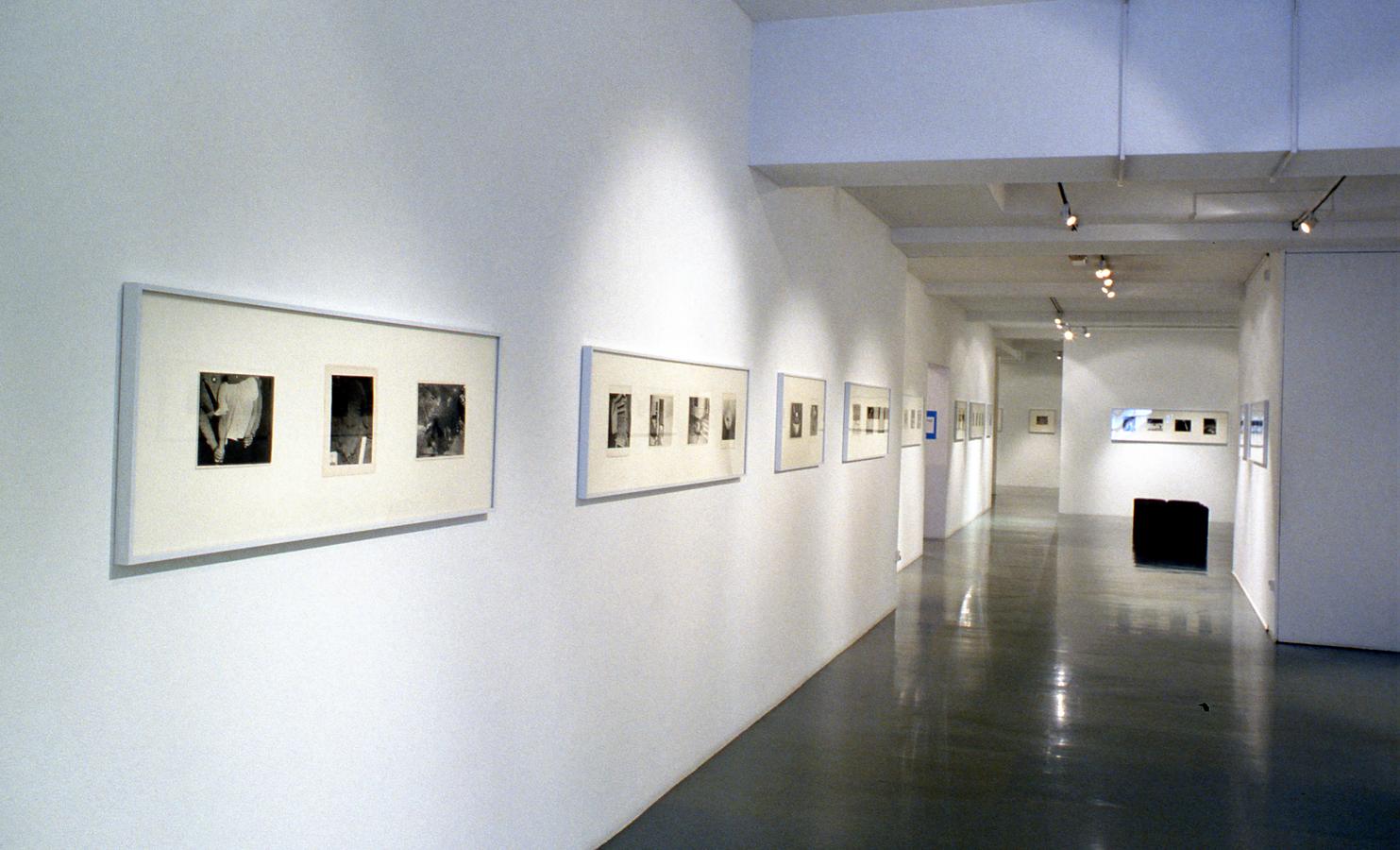
Fig. 7: Installation shot showing the exhibition Evidence Revisited at the Photographer’s Gallery, London, 2005.
The spatial arrangement of the photographs was also characterized by the concept of grouping during the first traveling exhibition, initiated by the Center for Creative Photography in 1977. A letter giving instructions for the installation clearly prescribed how the photographs were to be arranged:
The 79 photographs are carefully sequenced into five groupings, each with its own particular mood and logic that best presents the work as a whole.
The system to be followed is coded on each frame: the letter denotes the group and the number denotes the photograph’s position in the group. For example, A1 is the first photograph of the first group. It is important that group A is the first group presented and that the exhibit ends with E.9
The letter shows that the arrangement was prescribed very precisely to ensure that the work was presented at its best. The photographs were grouped in the same manner as in 2004, but without any further subgroups created by assembling several photographs in one frame.10 For this purpose, it was not just the frame that was marked but also the reverse of the photographs: each photograph is labeled with a combination of a capital letter and a number. As there are no captions, this labeling practice appears to be a useful method to deal with the numerous photographs. Moreover, the order of presentation determined by curatorial gestures reflects an order that is closely linked to the practices in the photographic collection. After the Center for Creative Photography purchased the Evidence photographs in 1977, they became part of the photographic collection and were registered. The arrangement of the photographs in the collection file is according to the presentation in 1977, which means that the photographs presented in spatial proximity to each other are listed sequentially in the file. In other words, the classifying order presented in the spatial arrangement represents archival practices and vice versa.
My previous observations on Evidence have clearly demonstrated that the archive is a central point of reference for the artistic treatment of the photographs found. By dismissing conventional archival practices, the Evidence photo book stimulates a rethinking of arranging and presenting which attempts to overcome the documentary weight of the photographs by highlighting the imagery. Creating an arrangement that, albeit fixed, is characterized by an associative approach is in stark contrast to the often one-dimensional ordering of photographs practiced in traditional archives. Further, archival practices such as classifying and arranging are evident when the photographs are on display in the gallery space as the exhibitions organized by the Center for Creative Photography show. Whereas the sequencing of the photo book disrupts any sense of traditional narrative progression, the arrangements carried out by the CCP establish a strong choreography according to classifying modes. The exhibition display is opposed to the open character of the photo book, while simultaneously highlighting its practices as an archiving and collecting institution following the idea of a strong narrative.11 It is not least this mode of presentation that has caused a decisive shift in the artistic work and the meaning of the photographs. Used as photographic material for creating the book, the photographs have been ascribed an aesthetic value themselves. At the same time, by focusing on the photographs as aesthetic objects in the gallery space, the photo book has lost its original character; the book is sometimes presented in a display case or even missed in the exhibition space.12 In the course of such exhibition practices, the photo book may disappear behind the photographs and lose its role as actual artwork in some displays.
In the 2004 show, another curatorial strategy that affects the reception of the artwork was used when archival material was exhibited in addition to the photographs. Letters of correspondence documenting the artistic process and contemporary reviews were presented in display cases. Through the exhibitors presenting other archival material, the photographs have completely lost their character as documents. Once more, the emphasis was on the meaning of the Evidence photographs as images with an intrinsic value.
13.4 Cataloging the Evidence photographs—production of meaning in the photographic collection
After discussing the Evidence project against the background of archival practices as artistic and curatorial strategies, I would now like to focus on a subject that is outside the realms of visible representations as the Evidence project manifests itself in particular in the cataloging practices within two photographic collections. Provided that the practices applied of registering, categorizing, and presenting the photograph influence its meaning, I would like to point out how the treatment affects the perception of the Evidence photographs.13
My analysis focuses on two institutions that possess photographs which are part of the Evidence project: the Center for Creative Photography at the University of Arizona (CCP) and the San Francisco Museum of Modern Art (SFMOMA). As mentioned above, in 1977, the CCP purchased a total of 243 photographs Mandel and Sultan had gathered for the purposes of creating the photo book, intended as a preselection. Most of these are prints taken directly from the archive (showing inscriptions and stamps), partly reproductions made for Mandel and Sultan, and a few prints made from the original negatives by the artists themselves.14 The SFMOMA collection includes 44 prints the museum purchased in 1993. Similar to the photographs in the CCP collection, the markings on the reverse of the prints vary; some show stamps and handwritten notes while others do not have any inscriptions except for the inventory number.
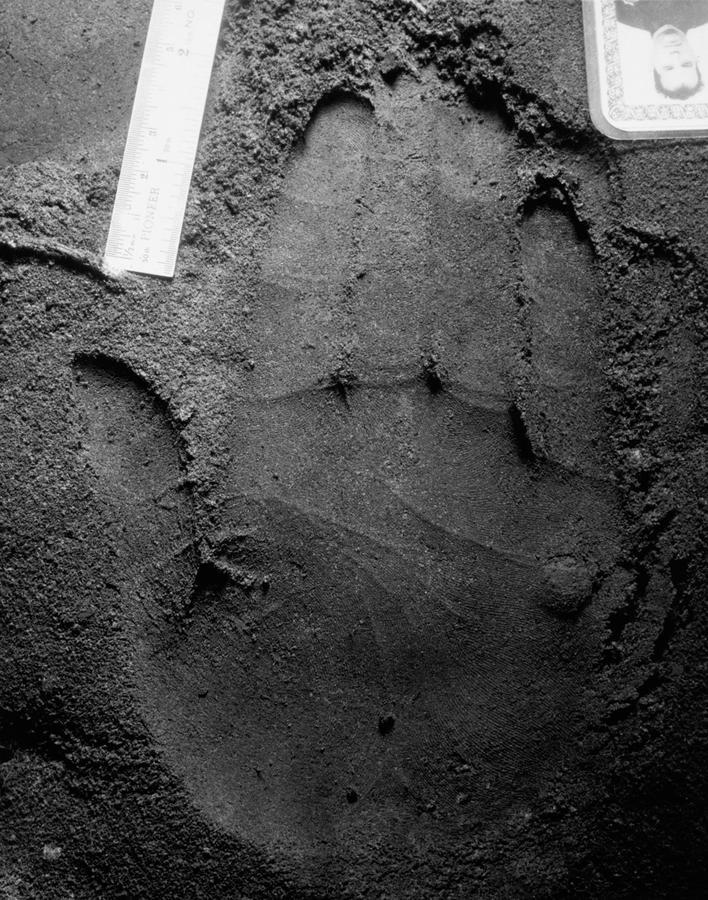
Fig. 8
The CCP and SFMOMA collections include several photographs of the same motif beside this photograph depicting the imprint of a hand on sandy soil. The SFMOMA collection file depicts the hand similarly to the photo book, whereas in the CCP file the photograph is reversed, the hand is facing upward (see Figs. 9–11). This is not a slight change but one with a tremendous effect that makes us aware how human vision is predetermined: when rotated 180 degrees (see Fig. 8 in Hyperimage), the imprint becomes a relief. While the CCP’s image showing the hand as an imprint pays attention to the original use of the photograph to secure evidence,15 that of SFMOMA refers to the usage of the photograph within art contexts. Equally, a different approach to the photographs becomes obvious in the authorship’s registration. Distinguishing between the authorship of the photograph and the artwork, the CCP mentions both the photographer (anonymous) and the artists Mandel and Sultan, whereas the authorship of the photograph is assigned to the artists only in the SFMOMA collection. Moreover, the photographs are designated as “commercial prints” and thus considered to be photographic documents by the CCP. While the photographs are clearly ascribed an artistic status in the SFMOMA collection, the cataloging practice of the CCP also indicated the original provenance of the prints. This brief comparison shows that the Evidence photographs are considered and thus registered differently in the two museums.
As discussed earlier, the different cataloging of the photographs reflects distinct approaches to photography. Furthermore, the differently nuanced treatment of the photographs reflects an uncertainty which has arisen as a result of the introduction of non-art photographs into art contexts. The tendency of exhibiting photographs produced for the purposes of documenting and reporting increased in the 1970s and evoked a discussion about the appropriate manner of presenting these photographs within museum contexts.16 In 1977, Hilton Kramer deplored the associated risk of aestheticization of these photographs in an essay published in The New York Times (Kramer 1977). Evidence also became a focus of the critique at the time: the presentation of the photographs was discussed when Davis Pratt, curator of the Fogg Art Museum, Harvard University, received a box with framed prints. In 1978, the Evidence prints were sent to Pratt for an upcoming exhibition. Davis Pratt criticized the presentation of the photographs on the grounds that it dissolved the photographs’ original contexts.17
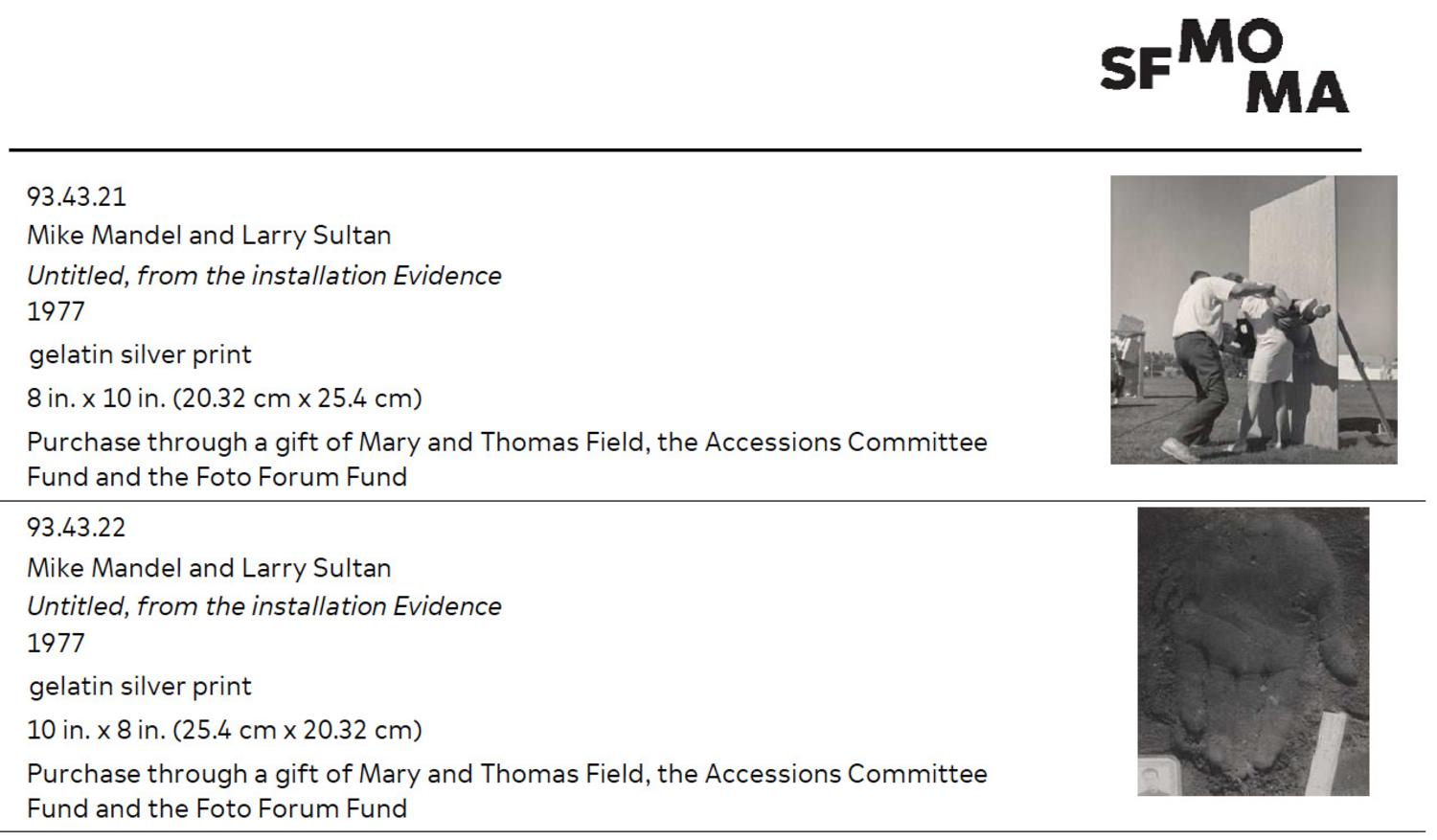
Fig. 9: Extract from the Object Summary, Photographic Collection of the San Francisco Museum of Modern Art.
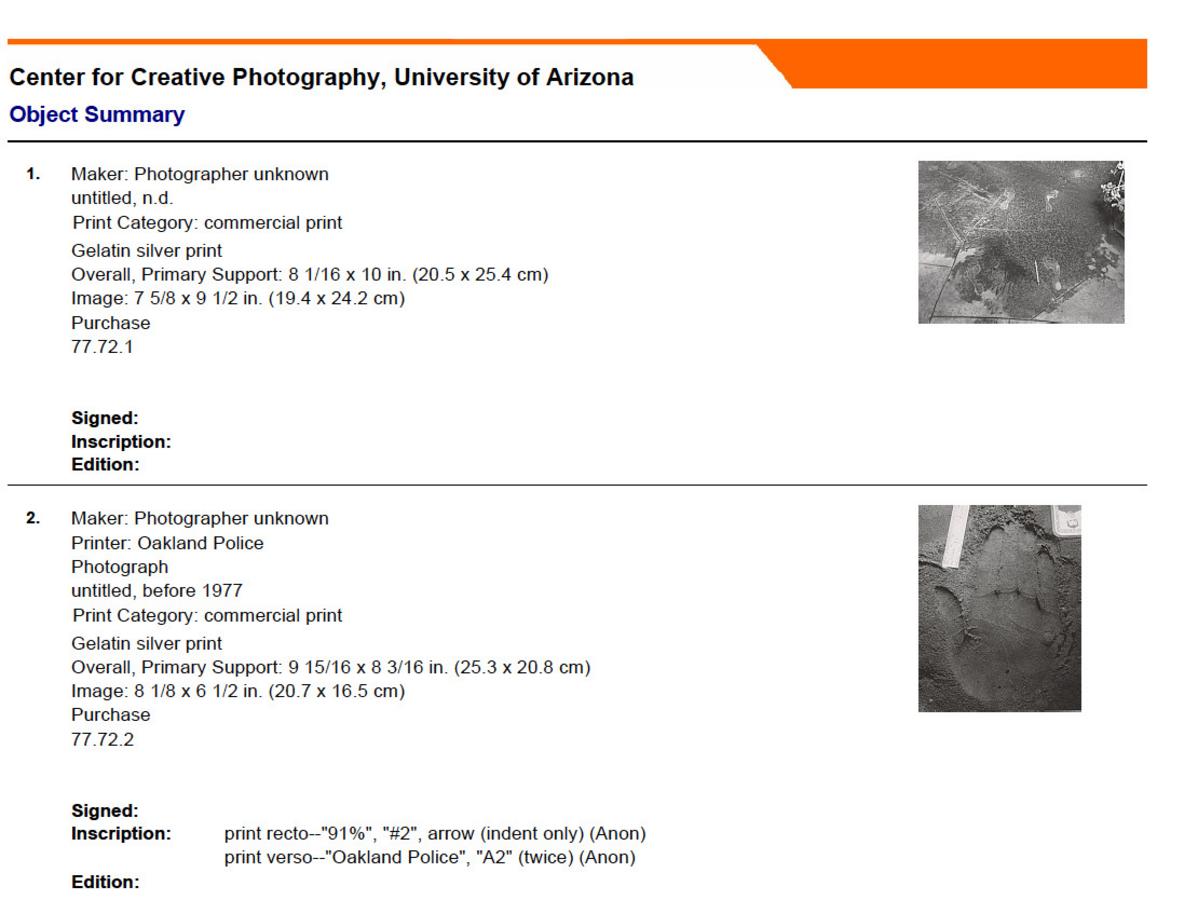
Fig. 11: Extract from the Object Summary, Center for Creative Photography, University of Arizona.
In a paradigmatic way, Pratt’s criticism shows how differently the photographs have been perceived: while Pratt wanted to visualize the photographs’ former status as documents, the CCP presented the photographs as fine art objects. This different approach is also reflected in sometimes contrasting receptions of the visual representations of Evidence. When published in 1977, the book was partly mistaken for a publication documenting the exhibition, and not considered to be an art or photo book.18 In fact, Evidence was regarded as a curatorial work, given expression by Robert Heinecken who raised the ironic question whether Evidence was a simple curatorial work or an artistic act (Heinecken 1977).
The fact that the Evidence prints were presented as art photographs in exhibition contexts is not only a curatorial decision but is determined by the cataloging practices the prints have undergone by becoming part of photographic collections. Although the CCP’s registration takes account of the diverse contexts of the photographs, their former original status and their meaning within the artistic process are neglected by a range of practices. The photographs have lost their status as archival material in an artistic process after entering the photographic collection. The prints are part of the fine art photography collection, stored in boxes, each put in a plastic cover, and treated with special care. Classified, categorized, and subsequently presented as art photographs, the Evidence photographs are considered as such. Finally, in the course of such practices, the artwork has been shifted in such a way that the meaning of the photographs superimposes the photo book.
13.5 Conclusion
The act of cataloging in a photo collection is shaped by individual decisions made by the registrar on the basis of institutional claims. Consequently, the cataloging practice has to be reflected adequately and adjusted to meet the requirements of each photograph. The previous study demonstrates that the Evidence prints are cataloged, treated, and thus presented first and foremost as aesthetic objects whereas their histories or subsequent stages are barely visible anymore. But as Joan M. Schwartz stated, “archivists can engage the photographic document more fully, focusing not on its content but rather on the functional context of its creation and action(s) in which it participated” (Schwartz 2012, 15). The contexts and actions that affect the meaning of the photographs have to be presented in order to be true to their histories. As the Evidence photographs can no longer be considered to be either aesthetic objects or historical documents but are both at the same time, the photographs have to be experienced in their diverse lives within the archive. On the one hand, this means revealing the diverse contexts the photographs are embedded in and, on the other hand, it means distinguishing between the multiple prints with regard to their diverse materiality and purpose.19
This also applies to the presentation of the Evidence photographs in exhibition contexts. In order to avoid a potential aesthetic status, the position of the photographs within the artistic process should be transparent and mediated, and their various histories should be presented. Since the way the photographs are cataloged, categorized by keywords and genre, has a strong impact on how the photographs are viewed and presented, the presentation of these photographs has to be reflected in order to avoid a one-dimensional narration that fails to take account of their specific characters. As far as the Evidence photographs are concerned, this means bearing in mind the different contexts the photographs have appeared in as well as revealing their status within the artistic process. Further, to reflect these contexts requires presenting the diverse materiality of the photographs, their different treatment, and, finally, their various forms of visual representation.
13.6 List of Figures
• Fig. 1: Book cover of Evidence, ed. by Mike Mandel and Larry Sultan, 2. Edition, New York: D.A.P., 2003. Hardcover, 92 pages, 61 black/white photographs, 23.5 x 25.5 cm.
• Fig. 2: Double-page spread from Evidence, ed. by Mike Mandel and Larry Sultan, 2. Edition, New York: D.A.P., 2003. Hardcover, 92 pages, 61 black/white photographs, 23.5 x 25.5 cm © Mike Mandel and Larry Sultan.
• Fig. 3: Double-page spread from Evidence, ed. by Mike Mandel and Larry Sultan, 2. Edition, New York: D.A.P., 2003. Hardcover, 92 pages, 61 black/white photographs, 23.5 x 25.5 cm © Mike Mandel and Larry Sultan.
• Fig. 4: Double-page spread from Evidence, ed. by Mike Mandel and Larry Sultan, 2. Edition, New York: D.A.P., 2003. Hardcover, 92 pages, 61 black/white photographs, 23.5 x 25.5 cm © Mike Mandel and Larry Sultan.
• Fig. 5: The Evidence photographs on display at the Larry Sultan retrospective, Kunstmuseum Bonn © Kunstmuseum Bonn, 2015, photo: David Ertl, Cologne.
• Fig. 6: The Evidence photographs on display at the Larry Sultan and Mike Mandel exhibition, Fotomuseum Winterthur © Fotomuseum Winterthur, exhibition by Larry Sultan & Mike Mandel, 2010.
• Fig. 7: Sultan, Larry & Mandel, Mike. Larry Sultan and Mike Mandel: Evidence Revisited. Organized by the Center for Creative Photography, University of Arizona. Installation View. The Photographers’ Gallery, 5 & 8 Great Newport Street, WC2H 7JA. (October 7, 2005 –November 2, 2005) Courtesy of The Photographers’ Gallery, photo Jason Welling.
• Fig. 8 (in Hyperimage only): Untitled, from the installation Evidence, 1977, gelatin silver print, 20.32 x 25.4 cm © Mike Mandel and Larry Sultan.
• Fig. 9: Extract from the Object Summary, Photographic Collection of San Francisco Museum of Modern Art, provided in 2016.
• Fig. 10: Double-page spread from Evidence, ed. by Mike Mandel and Larry Sultan, 2. Edition, New York: D.A.P., 2003. Hardcover, 92 pages, 61 black/white photographs, 23.5 x 25.5 cm © Mike Mandel and Larry Sultan.
• Fig. 11: Extract from the Object Summary, Center for Creative Photography, University of Arizona, provided in 2016.
13.7 References
Crimp, Douglas (1989). The Museum’s Old/ The Library’s New Subjects. In: The Contest of Meaning: Critical Histories of Photography. Ed. by R. Bolton. Cambridge, MA: MIT Press, 3–14.
Edwards, Elizabeth (2011). Photographs: Material Form and the Dynamic Archive. In: Photo Archives and the Photographic Memory of Art History. Ed. by Costanza Caraffa. Berlin and Munich: Deutscher Kunstverlag, 47–56.
Geimer, Peter (2015). Vom Schein, der übrig bleibt. Bild-Evidenz und ihre Kritik. In: Auf die Wirklichkeit zeigen. Zum Problem der Evidenz in den Kulturwissenschaften. Ein Reader. Ed. by Helmut Lethen, Ludwig Jäger, and Albrecht Koschorke. Frankfurt a.M. and New York: Campus Verlag, 181–218.
Heinecken, Robert (May 1977). Open and Shut Case. Afterimage:6.
Hugunin, James (1977). Evidence. The Dumb Ox 5.
Kramer, Hilton (November 1977). The Paradoxical Museumization of Photography. The New York Times:35.
Krauss, Rosalind (1977). Notes on the Index: Seventies Art in America. October 3: 68–81.
– (1998). Die diskursiven Räume der Photographie. In: Das Photographische. München: Fink.
Moniot, Drew (1979). Untitled Review on Evidence. Studies in the Anthropolgy of Visual Communication:73–76.
Phillips, Sandra S. (2003). A History of Evidence. In: Evidence. New York: Art Publ.
Ruchatz, Jens (2012). Kontexte der Präsentation. Zur Materialität und Medialität des fotografischen Bildes. Fotogeschichte 124:19–28.
Schwartz, Joan M. (2012). ‘To Speak Again With a Full Distinct Voice’: Diplomatics, Archives, and Photographs. In: Archivi fotografici: spazi del sapere, luoghi della ricerca. Ed. by Costanza Caraffa and Tiziana Serena. Rome: Carocci Editore, 7–24.
Sekula, Allan (2003). Reading an Archive: Photography Between Labour and Capital. In: The Photography Reader. Ed. by Liz Wells. London u.a.: Routledge, 443–452.
Serena, Tiziana (2011). The Words of the Photo Archive. In: Photo Archives and the Photographic Memory of Art History. Ed. by Constanza Caraffa. Berlin und München: Deutscher Kunstbuchverlag, 57–71.
Spieker, Sven (2008). The Big Archive: Art from Bureaucracy. Cambridge und London: MIT Press.
Thomas, Lew (1977). Photography & Ideology: Theory, Review and Correspondence. Art Contemporary 8:44–45.
Footnotes
After it was first published in 1977, the photo book was republished in 2003. The second edition includes a facsimile of the first edition as well as an essay by Sandra S. Phillips. In contrast to the original edition of 1977, the later book presents 61 photographs. In spring 2017, the edition was reprinted.
I propose to regard Evidence as an artistic project that cannot be reduced to its visible representations but is instead characterized by a range of ongoing practices carried out not only by the artists but also by curators and registrars.
This paper was revised and modified after the conference held in February 2017 because of detailed research on the photographs in the Center for Creative Photography, University of Arizona, and the San Francisco Museum of Modern Art conducted during a research stay in April 2017.
Among the image archives Mandel and Sultan consulted were those of NASA’s Jet Propulsion Laboratory, Los Angeles Fire Department, California Institute of Technology, for example. Access to the archives was facilitated by an official letter Mandel and Sultan had received in connection with the project funding in the course of the grant for National Endowment for the Arts (Phillips 2003).
When first exhibited, the photographs were presented behind glass and unframed, hung next to each other (Phillips 2003).
See, inter alia, Moniot 1979; Hugunin 1977.
Studies on the significance of context for the meaning of photographs examine the relationship between caption and image as part of the presentational context (see Ruchatz 2012).
Among other venues, the exhibition Evidence Revisited: Mike Mandel and Larry Sultan was on display at the Photographer’s Gallery, London, and the Frances Lehman Loeb Art Center at Vassar College in Poughkeepsie, New York.
“Instruction for the installation of the traveling exhibition, Evidence,” file “Evidence – traveling exhibition,” AG 1:2:3:3, Center for Creative Photography.
Concerning the spatial arrangement, it says: “When preparing the lay-out of the exhibit, please allow ample space between each group as to clearly set one group off from another. If space permits, please exhibit the photographs in a linear presentation without stacking.” (Instruction letter, Note 9)
As Elizabeth Edwards pointed out, the archive is not a neutral space but is highly mediated, “constituting the process of archiving as a form of narrativising in itself” (Edwards 2011, 52).
Although the photo book is present in the gallery space, its presentation often disregards the book’s central function for the Evidence project, like, for example, in the Larry Sultan Retrospective that was on display in the San Francisco Museum of Modern Art in spring 2017. Beside other publications and catalogs, the Evidence book was made available in the last gallery.
Outlining her concept of “diplomatics,” Joan M. Schwartz refers to “the mediating influence of patrons, writers, editors, designers, publishers, and a host of others who determine the photographic documents we see, the meaning they communicate, and the contexts in which we confront them.” Thus, even the registrar has to be considered in his or her influential role on the meaning of the photographs (Schwartz 2012, 13).
Upon request, the two artists were provided with original photographs, reproductions, or original negatives by each institution. This information was given by Mike Mandel during an e-mail correspondence in spring 2016.
The reverse of the photograph bears the handwritten inscription “Oakland Police.”
Among others, Douglas Crimp and Rosalind Krauss reflected on what happened to non-artistic photographs once they became part of art contexts (see Crimp 1989; Krauss 1998, 43).
As Sandra S. Phillips outlined, the presentation of the photographs had changed since 1977. The traveling exhibition organized subsequently by the CCP presented the photographs in frames (Phillips 2003).
Among others, Lew Thomas recognized the specific character of the book as an art or photo book (see Thomas 1977, 45).
As mentioned above, the prints vary in their materiality also because of their different production processes and provenance. Further, beside original prints—those that were provided by the archives or printed by the artists in 1977—there are exhibition prints, for example.

